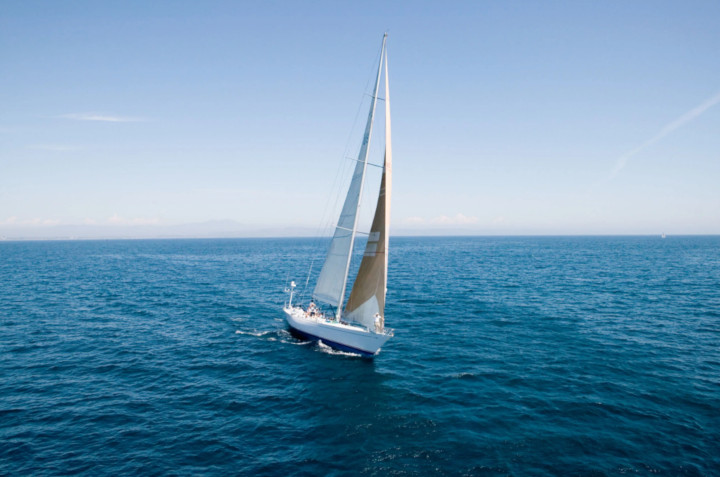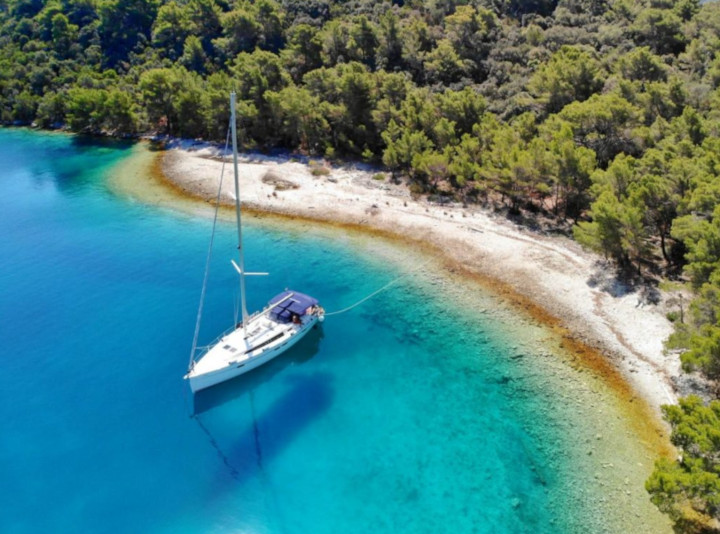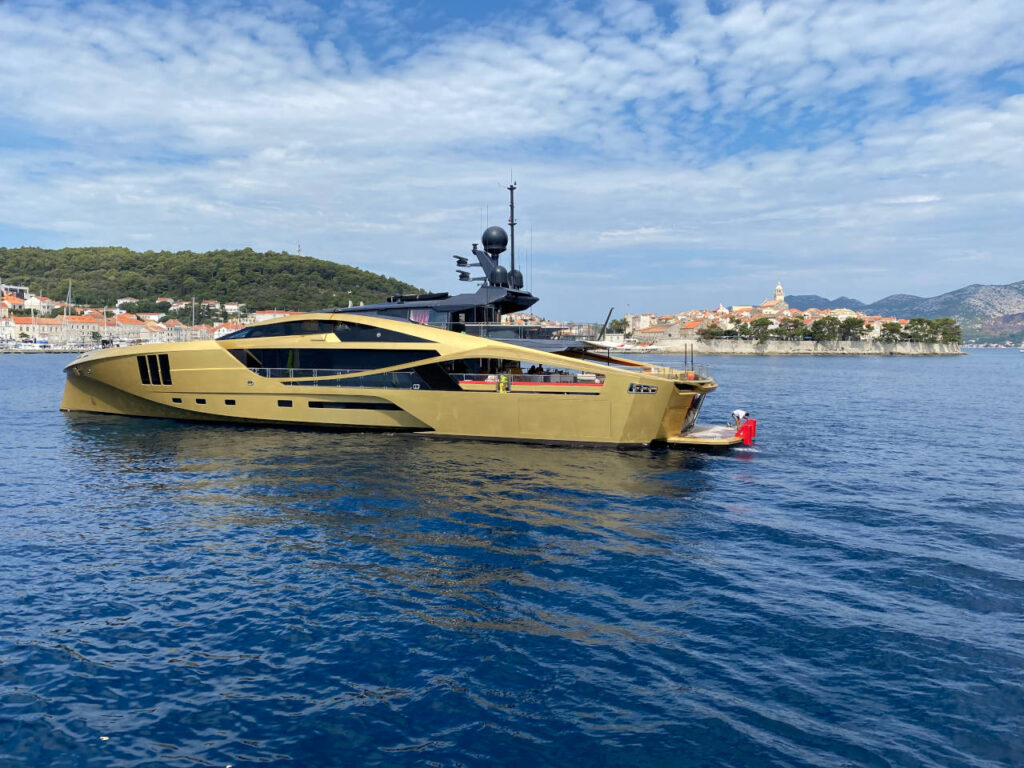Sail the transatlantic! – Cross the Atlantic on a yacht – a sailing trip that every sailor dreams of. Not only the sailing and the journey with the sailing boat over the sea but also the goal of sailing the Atlantic crossing from the Canary Islands to Martinique promises to be an adventure. Anyone who has always wanted to spend a longer time at sea will be delighted with the sailing trip.
But as romantic and exciting as this idea may sound, there are many questions in advance and things that need to be clarified and taken into account. Because a short stop at the supermarket to get the forgotten toothpaste is not possible on this tour. Everything has to be meticulously planned and thought through beforehand. Since we will be on the Unterwegs again in autumn 2021, we will explain below what the most common questions are about the Atlantic crossing and what you absolutely have to consider when sailing with us.
What can you read about in this blog post:
– When is the best season and which route to sail?
– How long does it take to sail across the Atlantic?
– Which ship is suitable for an Atlantic crossing?
– How dangerous is an Atlantic crossing?
– Crew: Who is on board and what requirements do I have to meet?
– Preparation is everything: what is needed?
– The ship and the comfort during the voyage
When is the best time of year and which route to sail?
Before we can talk about the best time of year, we first have to clarify which route we are talking about, i.e. whether we want to go from Europe to the Caribbean or back from the Caribbean.
To sail from Europe to the Caribbean the best season is between November and March. The best-known and most popular route for this is a section of the so-called barefoot route. The Barefoot Red describes a sea route that is favored by many circumnavigators, as in this way they get around the world with the trade winds at their backs and rarely have to sail against the wind. When crossing the Atlantic, sailors use the constant north-east trade winds to sail west with a pleasant wind from the stern. For this purpose, the yachts first come mostly from the Mediterranean to the Canary Islands in order to start the Atlantic crossing from there.
If you want to make extensive use of the north-east trade winds, you should first sail south from the Canary Islands towards Cape Verde, and then turn west. If you are not in a hurry, take the opportunity to make a stopover in Cape Verde. Alternatively, many yachts sail directly from the Canary Islands to the Caribbean. On this route, however, somewhat more unstable winds are to be expected, since depending on the position of the trade wind belt, one does not always have the desired constant winds from the aft direction there.
If you want to return to Europe from the Caribbean, it is best to start in May. At this time of year, most of the strong spring storms have passed and hurricane season has not yet started. First, you work your way north along with the Caribbean islands to the Bahamas, from where the crossing of the Atlantic begins for many sailors. In order to reduce the distance without a stopover, many sailors first set course for the Azores. This is an opportunity to restock the yacht with fresh provisions and, if necessary, to fix technical problems before heading to the last section, which usually leads to Portugal or directly to the Mediterranean Sea.
How long does it take to sail across the Atlantic?
If you want to cross the Atlantic with a sailing yacht, you have to plan three to four weeks for this. The most famous route leads from the Canary Islands to the Caribbean and is about 2800 nautical miles. If you calculate with a current average speed of 5 knots, you need a good 23 days of pure sailing time.
Which yacht is suitable for an Atlantic crossing?
A wide variety of yachts have been used for transatlantic sailing trips. From the small old boat with only one cabin to the big sailing Yacht with three masts, everything is possible. But in order to ensure a certain level of safety and comfort, it is advisable to choose a modern or modernized ocean-going yacht from 15 m in length. Yachts of this size have optimal sailing characteristics for a big trip like this. They are often faster and lie calmer in the water than yachts of smaller sizes and provide a more pleasant and safer sailing experience even in rough conditions.
Regardless of the size, every yacht must be in perfect technical condition before the transatlantic sailing trip, be equipped with the necessary safety-related equipment, and have sufficient spare parts and repair options. For this reason, it is advisable to use a modern or modernized yacht.
How dangerous is an Atlantic crossing?
When crossing the Atlantic, i.e. a long-distance route, dangerous situations can never be completely ruled out. The weather, the technology, and the health of the crew are the biggest unknowns here. This is precisely why it is important to prepare for all eventualities in advance. Particular attention should be paid to the weather: The season, route and yacht are decisive in determining how high the risk of bad weather is. Bad weather here means in particular high and steep waves, as well as extremely high winds. In order to minimize such a risk, we are well equipped to sail in autumn, a season when a relatively constant wind, the northeast trade wind, blows between the Canary Islands and the Caribbean.
But broken components on the yacht can also become a major problem at sea. A well-maintained vessel with plenty of spare parts and a tech-savvy crew are the best precautions here. Expertly prepared and with creative craftsmanship, almost all problems can be solved at sea.
Unusual health problems or accidents cannot be influenced in advance. For this reason, at least one crew member should have completed a “Medicine at Sea” course or similar beforehand. In addition, a well-equipped onboard pharmacy is absolutely necessary.
With all these measures, we can keep the risk low and set sail well prepared with a seaworthy and well-maintained yacht and with a good feeling.
Crew: What requirements do I have to meet and who is on board
On long-distance sailing trips, there are always at least two experienced sailors on board (skipper and co-skipper) who have the necessary certificates. In addition, there is a maximum of 7 guests.
Guests are also considered to be fellow sailors who, according to their level of knowledge, are actively involved in everyday sailing and support with the usual work on board. This could be the case, for example. to keep watch together with a crew member, to carry out light maintenance work onboard, or to provide meals together.
This may be self-evident to many, but due to the length of time on board the yacht and potential weather changes, a healthy physical condition and seaworthiness are essential for the Atlantic crossing. Serious previous illnesses that could lead to complications at sea are unfortunately too high a risk for the trip and participants should generally be in good physical condition so that safe movement onboard can be guaranteed even in rough seas. In-depth sailing knowledge is not a must but of course an advantage. However, initial sailing experience is required to assess seaworthiness. Every fellow sailor should have already sailed on a trip lasting several days in order to know whether the movement at sea,
What is needed to be prepared for the Atlantic crossing
But before we can embark on the long journey, we first make sure that we are well prepared: electrical and mechanical systems have to be checked, the yacht has to be equipped with spare parts and, if necessary, new systems such as a second, smaller watermaker and solar systems have to be installed will. The sailing route from east to west must be planned and options for bad weather phases must be worked out. Also – and perhaps most important for maintaining a good mood on board: Provision planning! A meal plan will be drawn up with particular attention to food perishability, quantity, and storage due to the length of time on board the yacht.
Onboard there are life jackets for everyone, a life raft, and a satellite phone with which the outside world can be contacted at any time. There is also the so-called Epirb (Emergency position Indicating radio beacon station), which transmits the position of the boat to the rescue service in the event of an emergency. Furthermore, the SART (Search and Rescue Transponder) sends the position data to the yacht in the area in an emergency. The catamaran is particularly well equipped for longer trips and offers many different accommodation options on three levels. Due to the spacious, comfortable cabins, the deck level, and the bridge, the yacht sometimes even appears almost empty due to the changing watch rhythm.
The yacht and the comfort during the Atlantic crossing
You can travel comfortably on our luxuriously equipped sailing yacht, which is why long-distance trips such as the Atlantic crossing remain comfortable. A 230 V power connection is ensured for approx. 2-3 hours a day by means of the engine or generator operation. In addition, a desalination plant, also known as a watermaker, onboard can turn salt water into fresh water for showering and rinsing. Since the generator and therefore diesel is required for the water maker, the water supply should still be handled with care. We also carry drinking water in bottles on board. The catamaran also offers a consistently stable swimming position without heeling. Furthermore, the sailing trip is the perfect time to escape the stressful everyday life and to do a little “digital detox” and put the cell phone aside, since internet and mobile network use are no longer possible as soon as the coastal region has been left. Of course, contact with the outside world is not completely cut off, since, as described above, there is always the possibility of communicating via satellite phone in emergencies and a daily weather report can also be obtained in this way.




